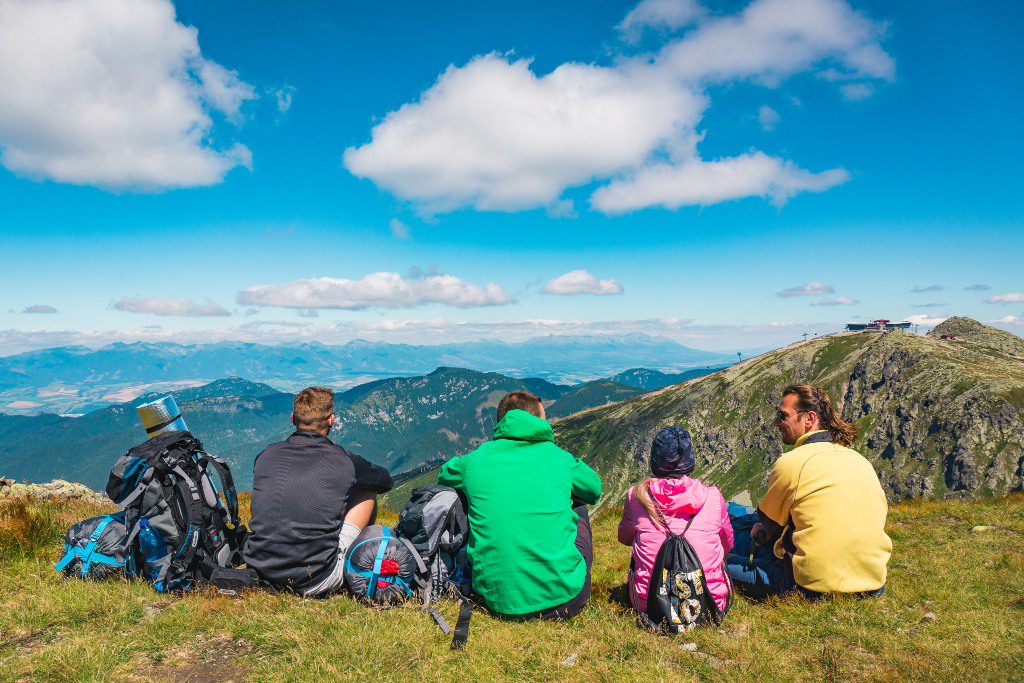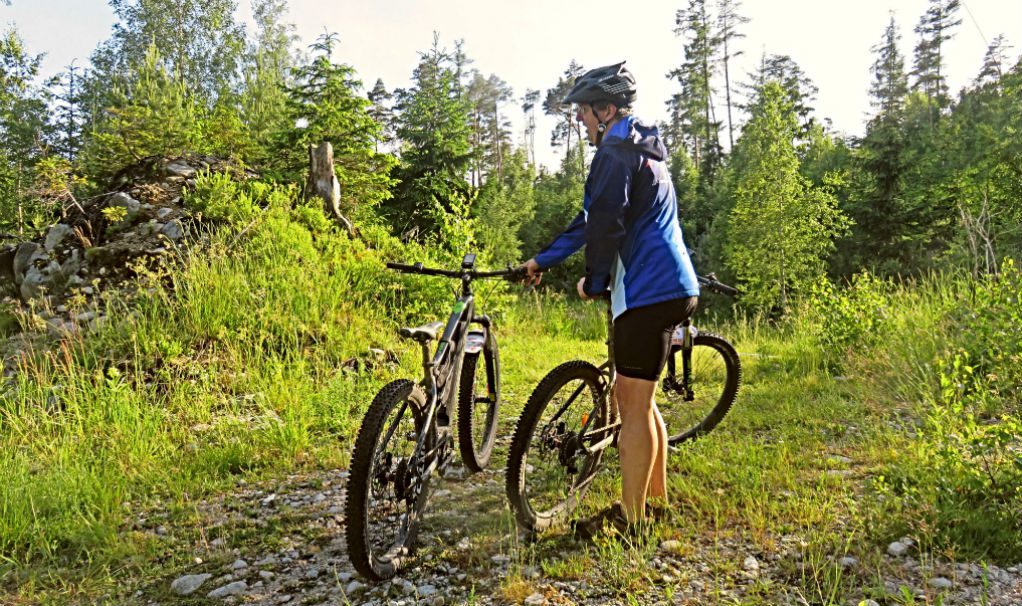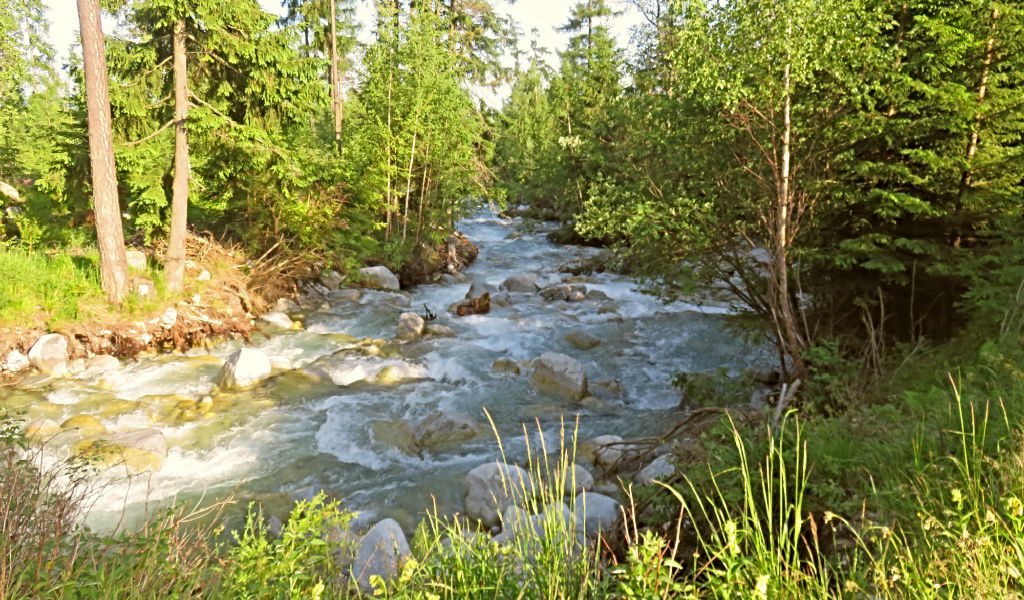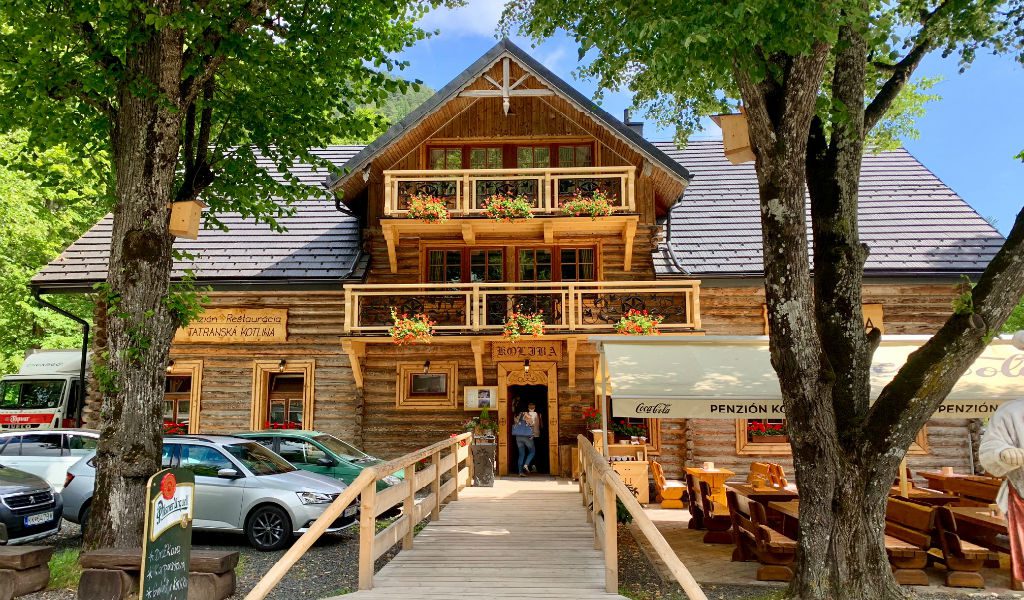
By Ramy James Salameh
In 2019, the High Tatras in Slovakia were voted No.1 destination to visit on Lonely Planet’s “Best in Europe” list. The Tatra National Park is bursting with active adventures and wellbeing opportunities the year round. If broken down by numbers the region reads like this: 1,150km of biking trails; 1,800km of hiking trails; 50 peaks at more than 2,000m high, with the highest being Mt. Gerlach at 2,655m and the highest peak in the Low Tatras, Mt. Dumbier, at 2,042m. However, it is not until one is immersed in this wondrous nature surrounded by grand edifices can one really appreciate its true benefits on body and soul.

There are rare moments in life where you can tangibly see the enormity of “Mother Nature” and feel incredibly small set against such an epic landscape. This is what I experienced as I stood looking upon the crystal clear water of Lomnicky Pleso (Mountain Lake) from a rocky outcrop at around 1,800m. Reflected in the glacial waters was Slovakia’s second tallest peak Lomnicky Stit at 2,634m, just one more cable car journey away. Below, the vista stretched as far as the eye could see towards Lomnica Tatranska and the city of Poprad, the gateway to the High Tatras Mountains, the jagged artery of the Carpathians.
Hiking trails spread in all directions across the rocky landscape like a series of veins branching out from the lake – the centrepiece – whose own circuitous trail was intermittently interrupted by sign-boards describing everything from geology to flora and fauna prevalent to the region. This lofty excursion was merely the side show to the main event, which was a mountain bike ride from the “High to Low” Tatras and all in just a few hours. Our route would follow the forested trails from Tatranska Lomnicka to Bachledova Valley in the Liptov region, before summiting the Bachledova tree top observatory.

Enchanted by the reflections of Mt Lomnicky in the lake, it was easy to miss the nearby Skalnate Pleso Astronomical Observatory founded in 1943 by Antonin Becvar, with two telescopes pointing to the sky from a duo of domes situated on the roof, this of course is the ideal promontory for star gazing sitting at 1,786m above sea level. Even more so, is the solar high-altitude observatory and weather station manned year round at the apex of Lomnicky Stit at 2,633m.
With clouds cascading over the mountain range, the only thing which was coming down the mountain faster was the lake water forging small paths across the boulders beside the cable car station; it was time to head down to initiate our cycle east. As the cable car descended serenely, the landscape softened towards the distant plains and the unmistakable art nouveau contour of the GrandHotel Praha, which stood out amongst its natural setting. A hotel whose roots were planted in 1905, under its then name The Palace Hotel before being renamed GrandHotel Praha in 1919. In the early 20th century, Tatranská Lomnica was developing as a healing recreational centre where European aristocracy retreated for relaxation, and continues to be a place of rejuvenation.

UNESCO status
Grandhotel Praha was a fitting landmark to ride past on our state-of-the-art e-mountain bikes, which were fully charged and ready to go. My professional cycling guide traced a finger over the map to view the route and soon we had left Tatranská Lomnica behind as we delved deeper into the forest.
The region offers countless kilometres of graded bike trails and thematic tours which blend nature, culture and history of which there is plenty, meaning every standard of cyclist is well catered for here. In the few hours I had the luxury of a guide, I wanted to experience the freedom an electric mountain bike would afford me.

The symbiosis between pedal power and fresh mountain air, within such a dramatic natural arena is quite unique and is why there has been a need to carefully manage the landscape. The Slovak Tatra National Park was formed in 1949 and identified as a natural, biospheric, reserve of UNESCO since 1993. Yet it seems the indigenous population and families have successfully preserved and sustained their natural legacy, even though Slovakian sovereignty has changed hands on several occasions – “my grandmother lived in four different countries yet lived in the same house all her life” one young Slovak mentioned during my journey; such historic experiences make locals fiercely proud of the nature that has sustained their forefathers.

The scenery would change with each kilometre that passed, and there would be regular moments the guide would pause to admire an ancient wood bridge spanning a turquoise stream crashing, frothing, and jumping over boulders standing in their path. Occasionally, the cycle path would veer out of the forest and unveil a traditionally built wood home or inn, such as Koliba Pension & Restaurant, the latter being too attractive to pass by, especially as serving staff weaved between tables wearing folkloric dress, native to the region with its intricate tartan-like patterns. It also gave me a chance to try the local hearty delicacy “Pirohy” (filled dumplings) – much needed sustenance, to continue the zig-zagging path to reach the Spisska Magura ridge and the treetop walk Bachledka.

Bachledova Valley
“Welcome to my office,” said my mountain bike guide pointing towards a silhouette of distant peaks and swathes of beautiful forest sweeping either side of the Bachledka cable car which traversed our heads. We had finally reached part of the ridge line of the Spišská Magura mountains, on the border of the Pieniny and Tatra National Parks. The bike’s heavy tyre tread and battery had easily coped with the couple of kilometre ascent from the valley floor, so there was no need to catch a breath. I was ready to take on the final (artificial) summit created by a tree-top structure that winds its way through the tree crown before spiralling up the main wooden structure as if caught in the eye of a tornado, as it swirls skyward.

Appreciating nature from treetop level, gives one a bird-like sense of freedom and a unique perspective into the species-diverse forest. The platform stretches across 1,234m offering information boards describing the protected flora and fauna and various activity stations. However, the main event was spiralling up the 32m-high tower, from which the Belianske Tatry Mountain range, Tri Koruny in Pieniny, and the Zamagurie area is spread across the horizon from the terrace. To cap off the journey, a taboggan-slide/tube zips you back to earth in a matter of seconds, and is a firm favourite among family groups.
The serenity at the top of the mountain was about to be energetically broken by an adrenaline-fuelled descent, the gentle elevation experienced on the ascent became a frightening gradient of loose rocks on the descent, but just added to the euphoria as we hurtled down the mountain, trying to hold our course and the handlebars straight.

Heading back to our start point
At the foot of the mountain, leaving the peaks and cable cars behind, we were back on the gentler trails. Taking a new route back towards Tatranska Lomnica, which brought us beside a river that was displaying all the energy and inertia collected from its journey down the mountains, turning it into angry torrents of rushing water, before our path meandered into a new part of the forest.
With staccato repetition my guide had been ringing his bike-bell, as we wound our way through the undulating terrain of a more densely forested area of our new cycle route. It only dawned on me during the latter part of our mountain bike tour, that these short bursts were for the benefit of any bears in the vicinity whom we might suddenly surprise. “It is unlikely that the bears would stray here but better to be on the safe side,” my guide stated with a wry smile, having seen me furtively looking over my shoulder and increased my pedal ratio.
“Bear watching is one of several activities visitors to Slovakia’s mountainous region can partake in,” he continued. “Whilst rare, it is possible to view these wondrous animals from a safe distance.” The words “safe distance” was all I was concerned about at that moment, but as his bell ringing reduced so did my heart rate.
“The area is also famous for the Tatra Chamois, wolf, lynx, deer, wild boars, wolves too.” The guide’s words started to become faint as he cycled off into the distance, leaving me thinking of which animal and which tour I would like to try next.
This project and its activities are implemented with financial support of the Ministry of Transport and Construction of the Slovak Republic





